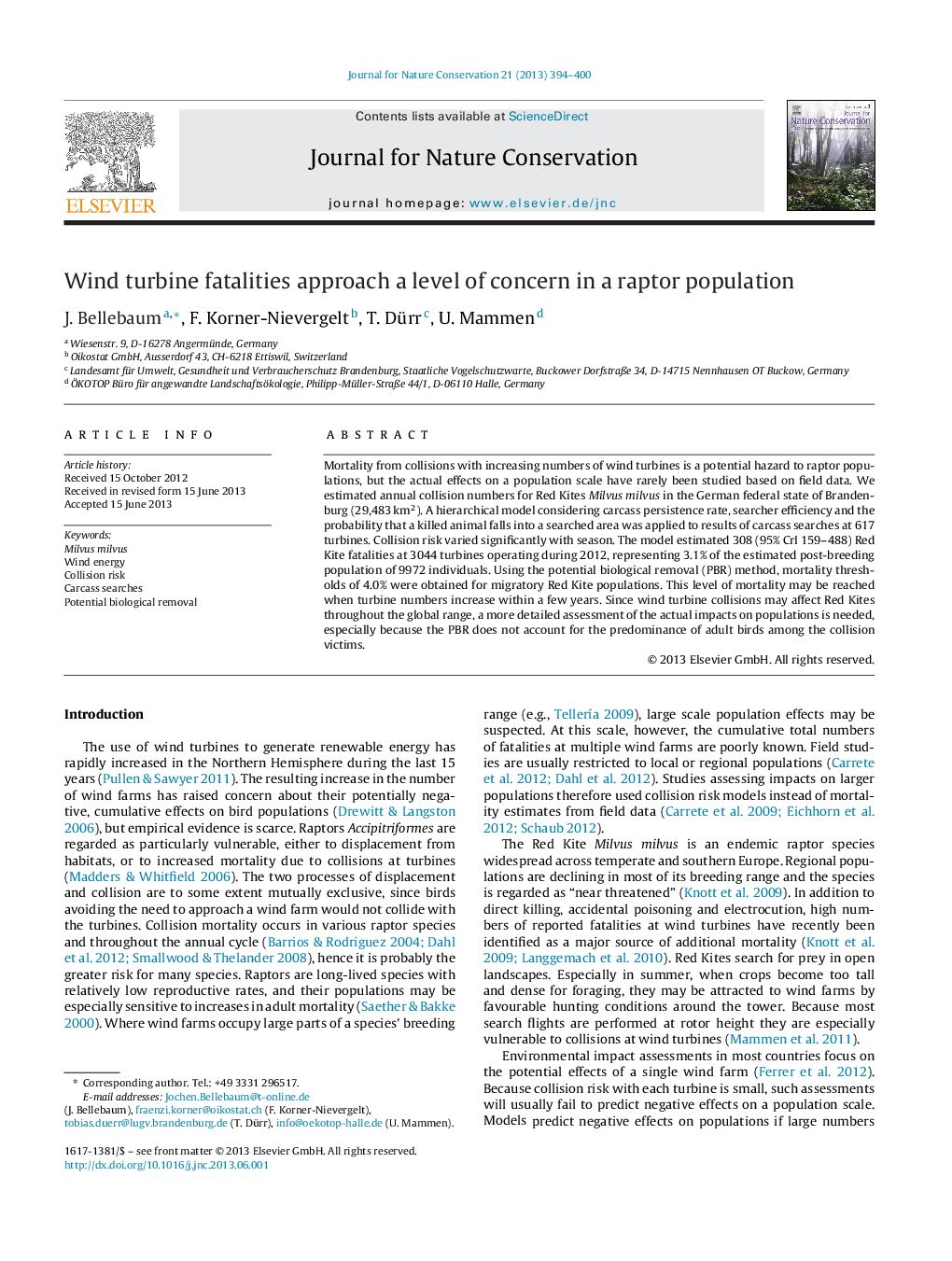| Article ID | Journal | Published Year | Pages | File Type |
|---|---|---|---|---|
| 4399896 | Journal for Nature Conservation | 2013 | 7 Pages |
Mortality from collisions with increasing numbers of wind turbines is a potential hazard to raptor populations, but the actual effects on a population scale have rarely been studied based on field data. We estimated annual collision numbers for Red Kites Milvus milvus in the German federal state of Brandenburg (29,483 km2). A hierarchical model considering carcass persistence rate, searcher efficiency and the probability that a killed animal falls into a searched area was applied to results of carcass searches at 617 turbines. Collision risk varied significantly with season. The model estimated 308 (95% CrI 159–488) Red Kite fatalities at 3044 turbines operating during 2012, representing 3.1% of the estimated post-breeding population of 9972 individuals. Using the potential biological removal (PBR) method, mortality thresholds of 4.0% were obtained for migratory Red Kite populations. This level of mortality may be reached when turbine numbers increase within a few years. Since wind turbine collisions may affect Red Kites throughout the global range, a more detailed assessment of the actual impacts on populations is needed, especially because the PBR does not account for the predominance of adult birds among the collision victims.
